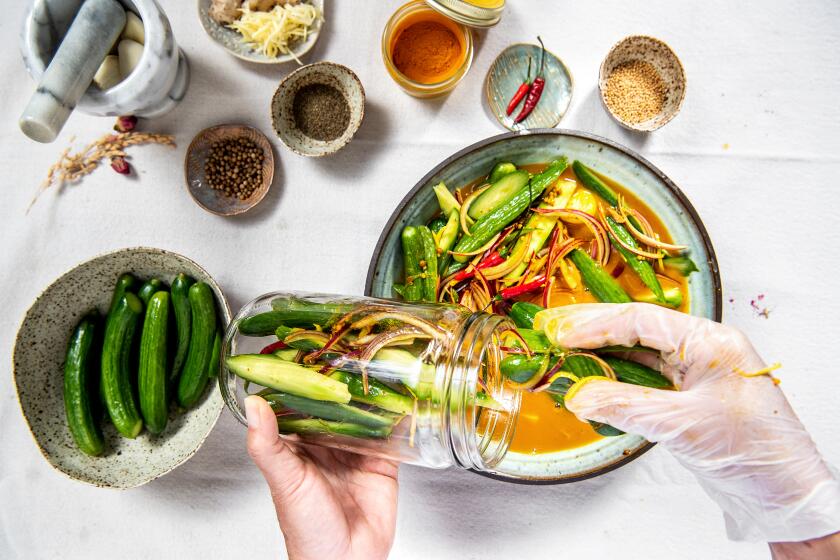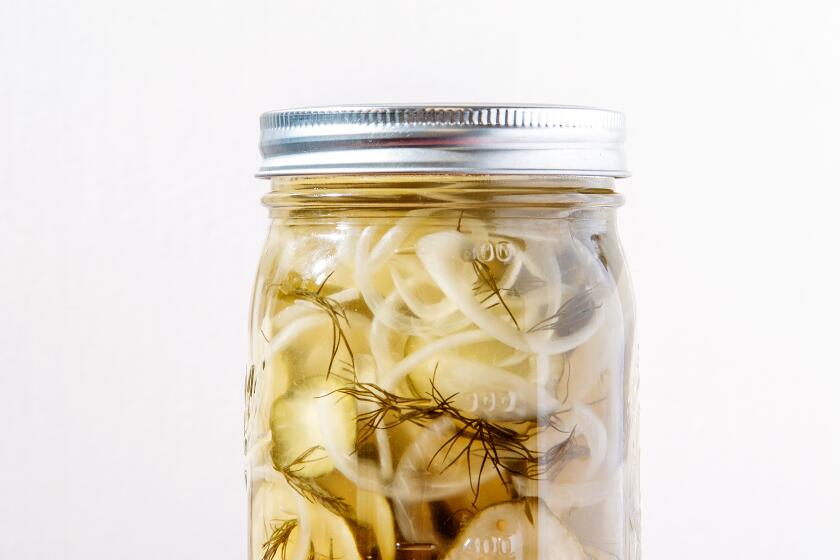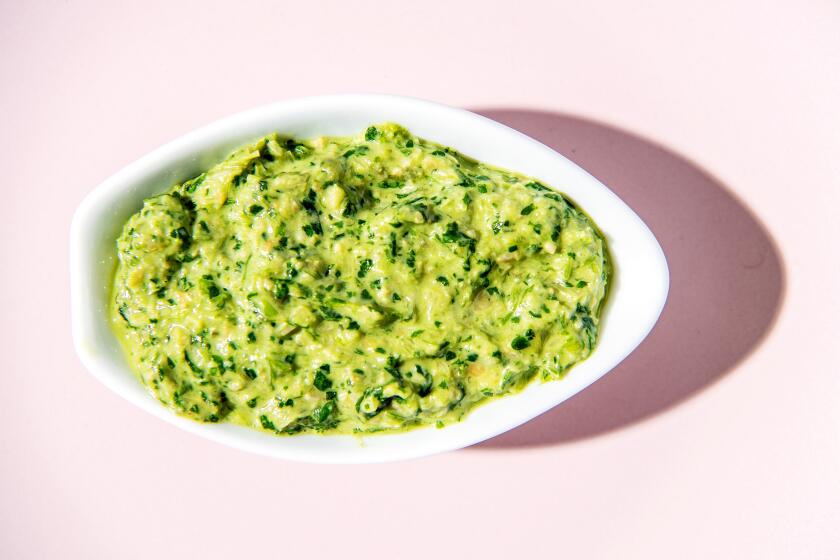L.A. chefs share tips for how to pickle like a pro

- Share via
Cut up something nice from the farmers market (beets, mushrooms, peaches and don’t forget cucumbers). Throw the slices into a quart jar and cover them with cold or hot brine, or salt them, and when they’re ready, use bits of what you pickled to add acid and crunch to your food. Want to do it better than your friends? Here are some pickle tips from the pros:
What is pickling?
According to Dr. Arielle Johnson, former in-house R&D scientist for Noma, René Redzepi’s landmark restaurant in Copenhagen, “pickling is the process of transforming and preserving ingredients with acids (and, often, salt). This can involve lactic fermentation, where you salt fruits or vegetables and friendly, salt-tolerant lactic acid bacteria naturally living on their skins metabolize some of the sugars into tangy and preserving acid.” Or it can involve acid from the start, where you submerge your ingredients in vinegar.
Cold brining can be done with either vinegar or salt (kosher pickles or paocai, which is often found in Sichuan cuisine). Hot brining uses hot vinegar to add acidity and partially cook the ingredients.
Ready to experiment? Misozuke pickles are made with miso. Kasuzuke pickling uses salted sake lees (a byproduct of sake production) to ferment squashes, melons and eggplants. Nukazuke pickles are fermented in a pasty, dry-wet brine made from moistened rice bran.
Hot vs. cold brine
Minh Phan of Porridge + Puffs says you should think of hot brine as something you use to cook dense vegetables or pungent aromatics. The temperature can bring out flavors, which leach into the brine. She recommends using hot brine to pickle opaque vegetables or spices such as root vegetables, kabocha squash and garlic. Cold brines are useful if you’re looking to preserve the texture and crunch of a vegetable. Phan recommends translucent or “see-through” vegetables and fruits such as pears, radishes and most herbs for pickling in cold brine. At Porridge + Puffs, Phan pickles watermelon rinds, citrus peels and banana peels, herb stems, radish pods and mustard flowers in a cold brine.

Sweet vs. salty
Phan suggests tossing bitter greens and vegetables such as eggplant in salt and then rinsing or blanching in saltwater to reduce the bitterness before pickling. Roasted vegetables, which caramelize and sweeten as they cook, can be brined in a salty solution to help balance the sweetness.
Knife cuts
During one of Phan’s pickle workshops last year, she stressed the importance of knife cuts. (She also emphasized that picklers need to understand the anatomy of each ingredient to make thoughtful and deliberate decisions.) She suggests cutting carrots into coins to take advantage of the center, which is the sweetest part of the vegetable. Jeremy Fox of Birdie G’s believes that any celery stalk that hasn’t been cut into chevrons is a “mistake.” And you should try to keep your cuts even for even pickling.
Workshop it
Sign up for one of Jessica Wang’s virtual pickle workshops or tune in to one of her prerecorded video sessions on pickling. Details at picklepickle.co
Recipes
Minh Phan's bread-and-butter pickles
Jeremy Fox's Sliced Kirby Pickles
Preserved Lemon Cilantro-Scallion Paste
More to Read
Eat your way across L.A.
Get our weekly Tasting Notes newsletter for reviews, news and more.
You may occasionally receive promotional content from the Los Angeles Times.














